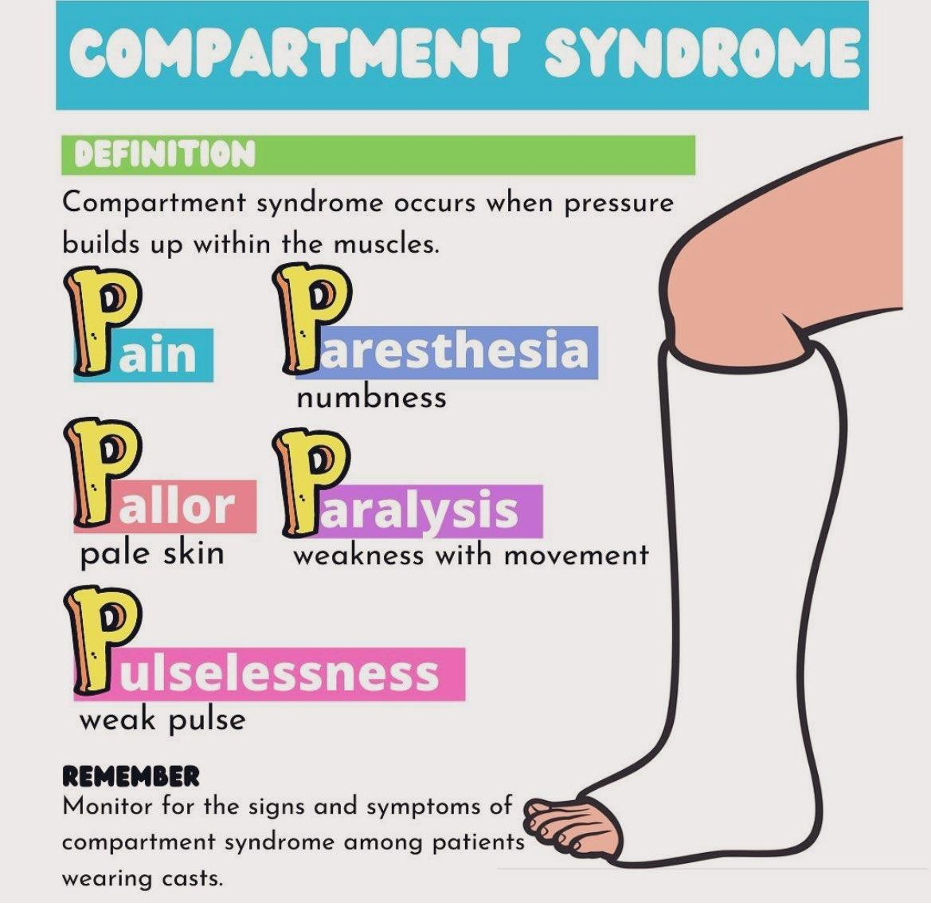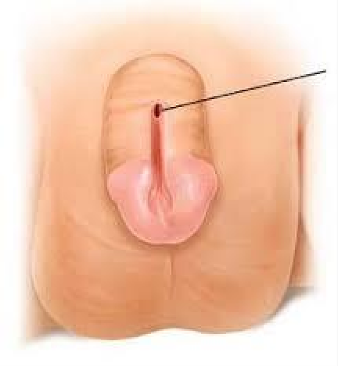A boy who has fractured his forearm is unable to extend his fingers. The nurse knows that this
may indicate damage to the epiphyseal plate.
is normal following this type of injury.
may indicate compartment syndrome.
may indicate fat embolism.
The Correct Answer is C
Compartment syndrome is a condition that can occur following an injury, such as a fracture, where there is increased pressure within a closed space (compartment) in the body. In the case of a forearm fracture, swelling and increased pressure within the compartment can lead to compression of the nerves and blood vessels, resulting in symptoms such as pain, numbness, and decreased function of the affected muscles.
The inability to extend the fingers suggests impairment of the extensor muscles, which are innervated by the radial nerve. If the radial nerve is compressed or injured due to compartment syndrome, it can result in a loss of function in the muscles it innervates, leading to the inability to extend the fingers.
damage to the epiphyseal plate in (option A) is incorrect because it, is not related to the inability to extend the fingers. The epiphyseal plate is the growth plate in long bones, and damage to it would typically affect bone growth rather than finger extension.
, stating that it is normal following this type of injury in (option B), is incorrect. Inability to extend the fingers is not a normal or expected finding after a forearm fracture. It suggests a potential complication or underlying issue.
fat embolism in (option D) is incorrect because it, is unlikely to cause an inability to extend the fingers. Fat embolism occurs when fat globules from a broken bone enter the bloodstream and can lead to respiratory and neurological symptoms, but it would not specifically cause an isolated loss of finger extension.

Nursing Test Bank
Naxlex Comprehensive Predictor Exams
Related Questions
Correct Answer is A
Explanation
A change in status that should alert the nurse to increased intracranial pressure (ICP) in a child with a head injury is confusion and altered mental status. As intracranial pressure increases, it can affect brain function and lead to neurological changes, including confusion, disorientation, irritability, decreased level of consciousness, or other alterations in mental status. These changes indicate that the brain is being compressed and compromised, and immediate intervention is required.
Option B, increased diastolic pressure with narrowing pulse pressure in (option B) is incorrect because it, can be a sign of increased ICP, but it is not specific to head injuries and can be influenced by other factors such as pain, anxiety, or systemic conditions. It is important to consider the overall hemodynamic status of the child and assess for additional signs and symptoms of increased ICP.
irregular, rapid heart rate in (option C), can be a sign of increased ICP, but it is not specific to head injuries and can be influenced by other factors such as pain, anxiety, or other medical conditions. Assessment of heart rate should be considered along with other signs and symptoms of increased ICP.
rapid, shallow breathing, in (option D) can be a sign of increased ICP, but it is not specific to head injuries and can be influenced by other factors such as pain, anxiety, or respiratory conditions. Respiratory assessment should be considered along with other signs and symptoms of increased ICP.
Correct Answer is C
Explanation
Epispadias is a congenital condition in which the urethral opening is not located at the tip of the penis as is typical but rather along the ventral surface (underside) of the penis. In severe cases, the urethral opening may extend all the way to the bladder.
absence of a urethral opening in (option A) is incorrect because it, describes a condition called urethral agenesis or aplasia, where the urethral opening is completely absent. This is a different condition from epispadias.
a penis shorter than usual for age, in (option B) is incorrect because it is not specific to epispadias and could be caused by various factors unrelated to the condition.
a urethral opening along the dorsal surface (topside) of the penis in (option D) is incorrect because it, is a condition called hypospadias. Hypospadias is another congenital anomaly where the urethral opening is located on the underside or along the ventral surface of the penis, but it is not synonymous with epispadias.
Therefore, epispadias specifically refers to the urethral opening being situated along the ventral surface of the penis.

Whether you are a student looking to ace your exams or a practicing nurse seeking to enhance your expertise , our nursing education contents will empower you with the confidence and competence to make a difference in the lives of patients and become a respected leader in the healthcare field.
Visit Naxlex, invest in your future and unlock endless possibilities with our unparalleled nursing education contents today
Report Wrong Answer on the Current Question
Do you disagree with the answer? If yes, what is your expected answer? Explain.
Kindly be descriptive with the issue you are facing.
